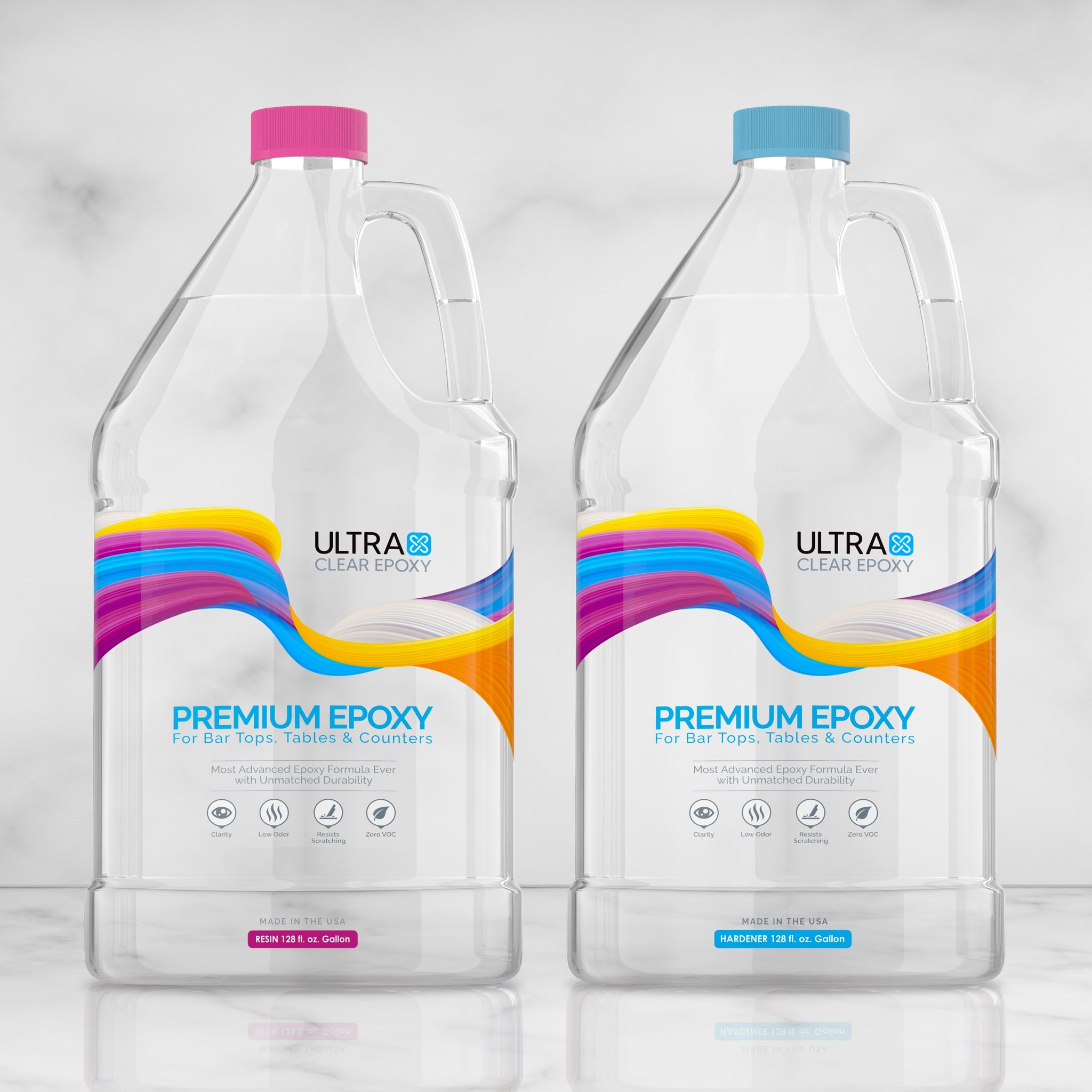While careful preparation is required for completing an epoxy project, many users may not know how to maintain them afterward. Basic care and cleaning are an important aspect of getting the most out of your epoxy finish. After all, the better you take care of something, the longer it is likely to last.
To ensure the longest possible life span for your epoxy surfaces, it's essential to understand how to keep it clean and what chemicals are safe to use on it.
Fortunately, epoxy can withstand many common cleaning chemicals, meaning you won't have to go out of your way to keep it in good condition.
How to keep your epoxy surface clean

1. Use basic soap and water.
You can start with a classic: ordinary soap and warm, clean water. We recommend using a microfiber cloth or even a clean t-shirt if it's good at absorbing. Paper towels will also do the trick, if that's your preference.

2. Use glass cleaner or a hard surface cleaner.
Almost any glass cleaner will make quick work of surface cleaning. Some can kill germs, too, allowing you to sanitize and clean at the same time.
There are many different types of glass cleaner these days, and most of them are fine for this purpose. Again, we recommend a microfiber cloth for wiping the surface down. It will also allow you to put pressure on any residues (such as dried out food), enabling you to scrape them off by hand.
Nonetheless, you can use almost any standard cleaning cloth to wipe the surface clean.

3. For stronger cleaning and sanitization, try diluted bleach.
Most bleaches can be diluted with cold water to make a sanitizing cleaning liquid that will kill most bacteria and other microscopic surface contaminants.
We'll give some basic suggestions, but please examine the directions on your bleach bottle to make sure you apply it properly, as bleach can be dangerous if misused; some bleach products may not have sanitizing properties.
Generally, about 1/4 cup of bleach mixed into one gallon of cold water is an appropriate ratio for making a surface cleaning liquid. Use this mixture within 24 hours to ensure that the sanitizing potency doesn't diminish.
If you choose to use bleach for cleaning your epoxy surface, avoid skin contact and wear suitable cleaning gloves—latex, nitrile, or vinyl. Even when diluted, bleach is unsafe for handwashing. Keep it away from your skin, especially your face.
Note: One thing to consider is that consistent usage of bleach may reduce the epoxy's luster over a long period of time. To preserve this trait, use bleach sparingly and stick with glass cleaner or soap and water unless necessary.

4. Diluted alcohol is good for sanitizing, but not ideal for removing residues.
There are a variety of food-surface sanitizing sprays and liquids that work well for killing germs on epoxy surfaces. These are often made from diluted alcohol and typically aren't as good at removing residues, but will kill germs quickly and efficiently.
Typically, 30 seconds of contact before wiping away the alcohol is necessary to kill more resilient germs. If you're using a spray, make sure you spray significantly. Wetting the surface area adequately is needed to ensure the full cleansing of bacteria.
Cleaning epoxy is straightforward and easy.
The good news is that keeping your epoxy surface clean is very easy compared to many other types of materials. You can treat it much like glass in these situations, and it doesn't require any unique products to maintain it.
Have questions? Need advice? Contact us!
If you have any questions about cleaning or maintainng your epoxy surfaces, or if you'd simply like some advice on planning an epoxy project of your own, please reach out to us at UltraClear Epoxy.
Our epoxy experts are available to answer questions and provide planning assistance for your projects. You can contact us via phone or email here. You can also text chat online, directly with an expert, by clicking the help button on the bottom right of your screen.











